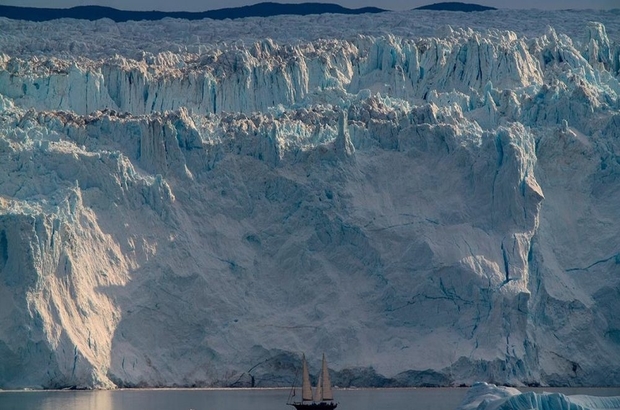JAGO LYNCH reviews Russian filmmaker’s latest documentary, Aquarela, screened at the Bertha Dochouse and featuring a Q&A with producer Aimara Reques.
Aquarela is a film of balance, almost everything within it exists in a tense liminality, and, whenever this equilibrium breaks, intense elemental chaos ensues. This is best summed up by a shot about a third of the way into the film, where the camera focuses on the end of a glacier; there is no movement, the only sound that can be heard is the deep cracking of ice from within. And then a huge chunk of the glacier breaks off, the peace of the original shot is broken, with the iceberg hitting the surface of the water below and creating a wave of otherworldly size.
This is a pattern repeated throughout the film, with Victor Kossakovsky, the director of Aquarela, allowing the audience to wonder at the natural beauty of ice, waterfalls, streams, the sea, before quickly reminding us of nature’s wild power. In the Q&A following the film’s screening at the Bertha Dochouse, the film’s producer, Aimara Reques, described it as being about water, from the point of view of water. It sounds like the kind of common nebulous artistic statement that you hear from filmmakers, but in Aquarela this vague aesthetic promise is delivered.
The viewer is shown the power of water, and how they are ultimately always at nature’s mercy. It’s a powerful watch from a human point of view, to be sure, but perhaps the most impressive thing about the film is how it technically delivers on this promise. The sound design is impeccable: designed for Dolby Atmos Audio, the audience feels at various points that they are within a glacier, underneath a crashing wave, in the middle of an Atlantic storm. On top of this, the decision to shoot at the high frame rate of 96 frames per second shows the speed and fluidity of water in a way that it has never been shown before on film.
However, these technical innovations unfortunately mean the film can almost never be viewed in its raw form. It has only ever been shown at 96 fps and with Dolby Atmos once – by Sony at the American Premiere – and the best most cinemas can hope to achieve is showing the film at 48 FPS and with standard surround sound. Essentially this film will be waiting for technology to ‘catch up’ within cinemas for a while before its full artistic vision is widely available. This doesn’t necessarily detract from the diluted experience most film goers will get, but there is a desire as a viewer to get a little bit more out of the film, knowing that the impressive cinematography and sound exists in a form beyond what can currently be shown.

Even without the high frame rate the film is forcefully cinematic though; from using Perfect Horizon’s ground breaking camera stabilisation to grading colours into dystopian monochrome landscapes, the film is visually daring throughout. Yet, by its lack of voiceover or captions the film might have felt more like a string of extraneous images than a documentary. The way this is avoided though, is through the film’s music. I have already mentioned the atmospheric sound design – this is a constant throughout – but the surprising element of the audio is the black metal that occasionally surfaces, created for the film by Finnish band Apocalyptica. While most nature documentaries we see are soundtracked by delicate orchestral compositions, Aquarela, as with its cinematography, takes the genre in a more experimental direction. One almost thinks nature and industrial metal music should not work together, but, with the backdrop of crashing waves and elemental wastelands, the sound and the image are a perfect marriage.
All of these separate cinematic techniques that Kossakovsky puts into the film add up to make the ice, water, storms, floods, waterfalls seem alien and violent: and, without any direction by voice-over or subtitles, the film allows the viewer to interpret these images at will. There is an underlying sense that the climate crisis is at the heart of Aquarela, but it is also concerned with life, death, and industrialism. Essentially it allows the viewer to project their own experiences onto universal images; one thing every viewer will experience, though, is the visceral power of our world, and our fragile place within it. Aquarela is a cinematic triumph, and will only get better as our projection technology improves – something that cannot be said of any other film.
Featured image source: Courtesy Participant Media





